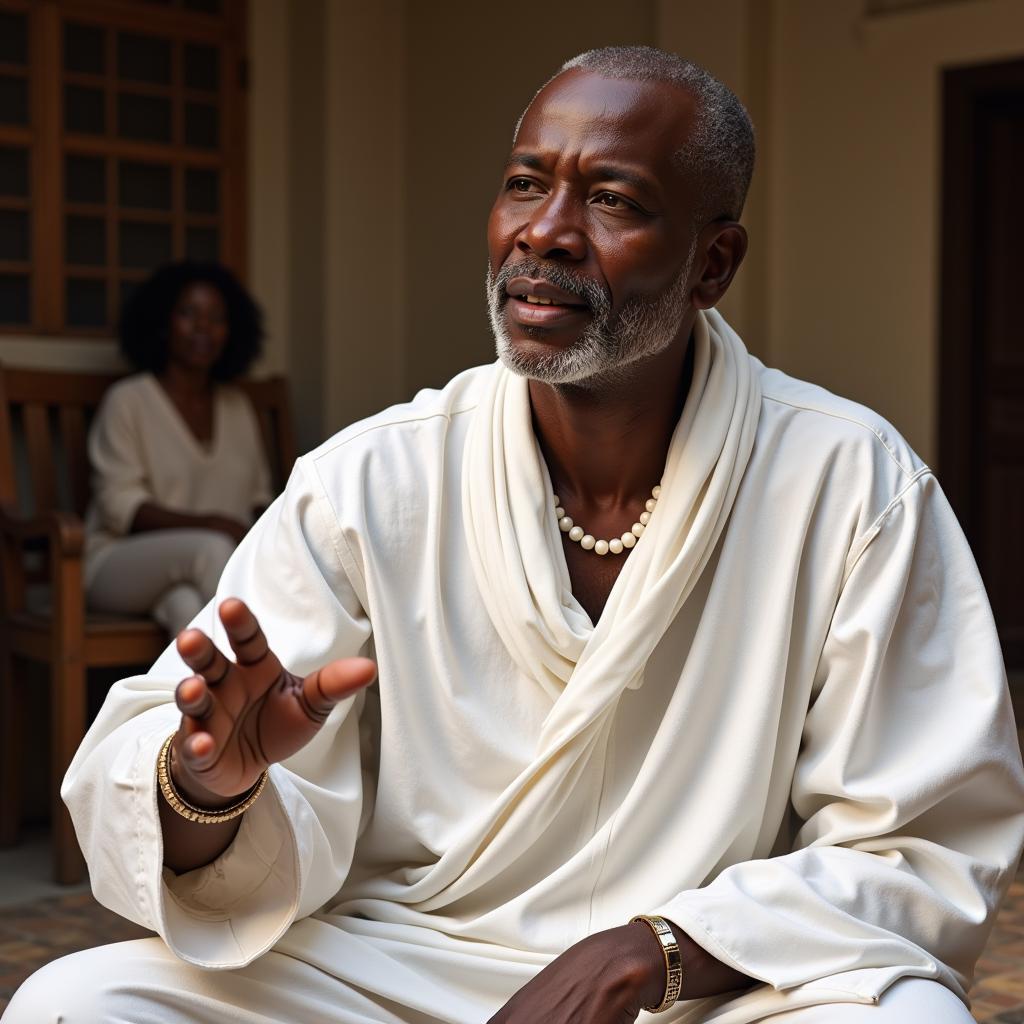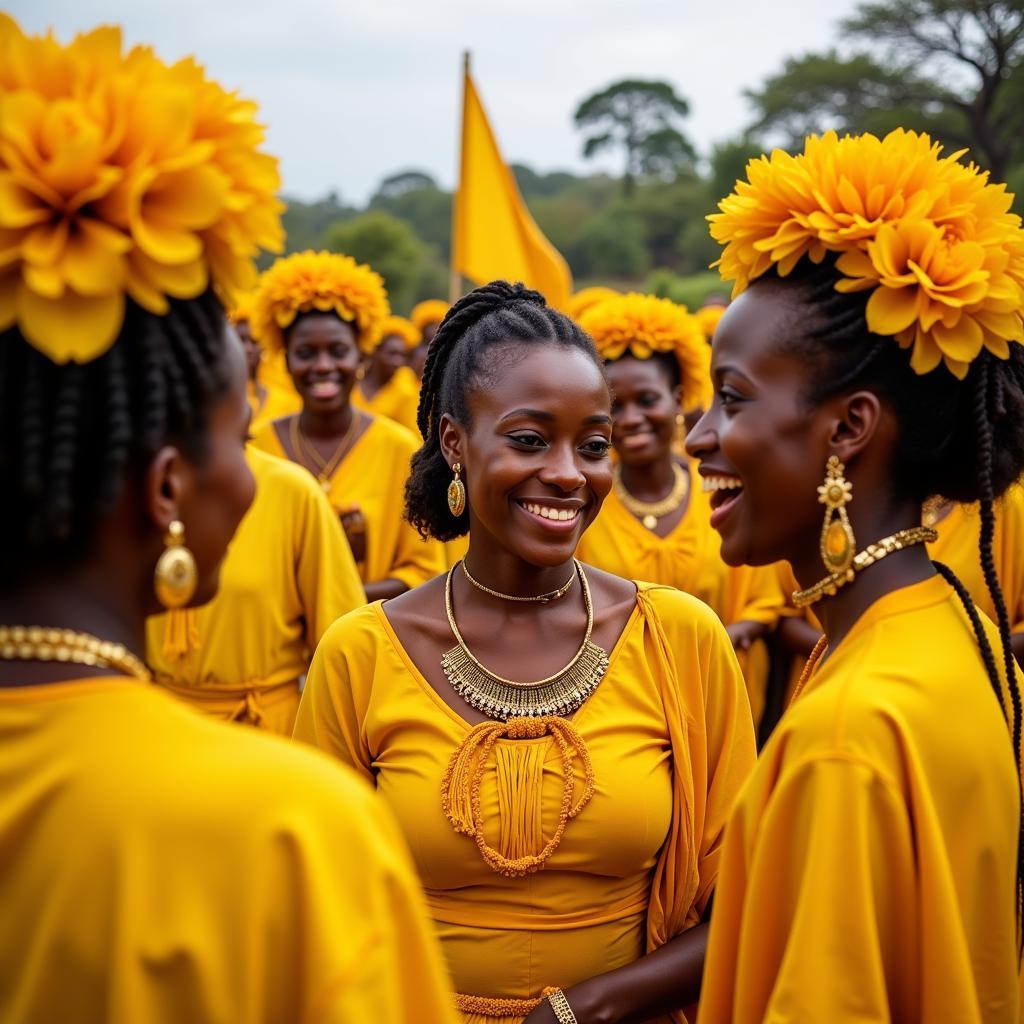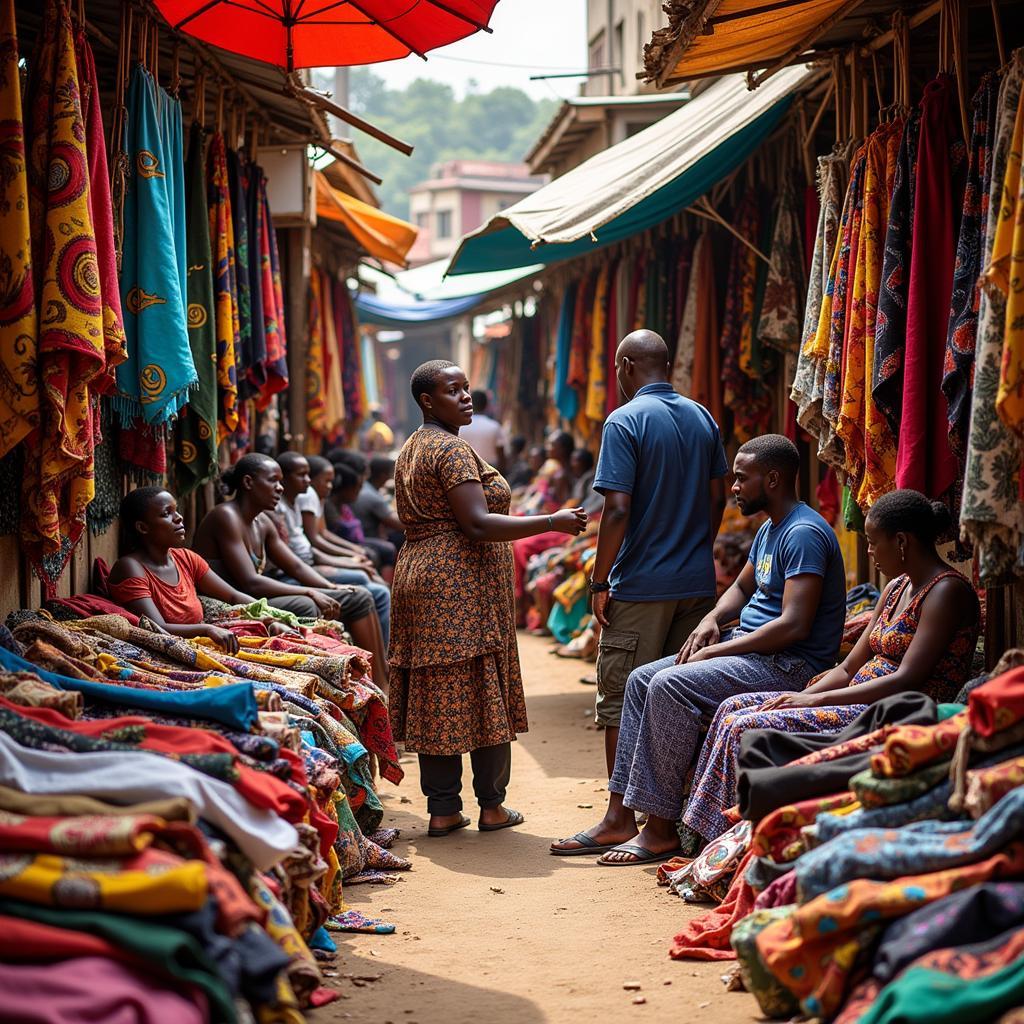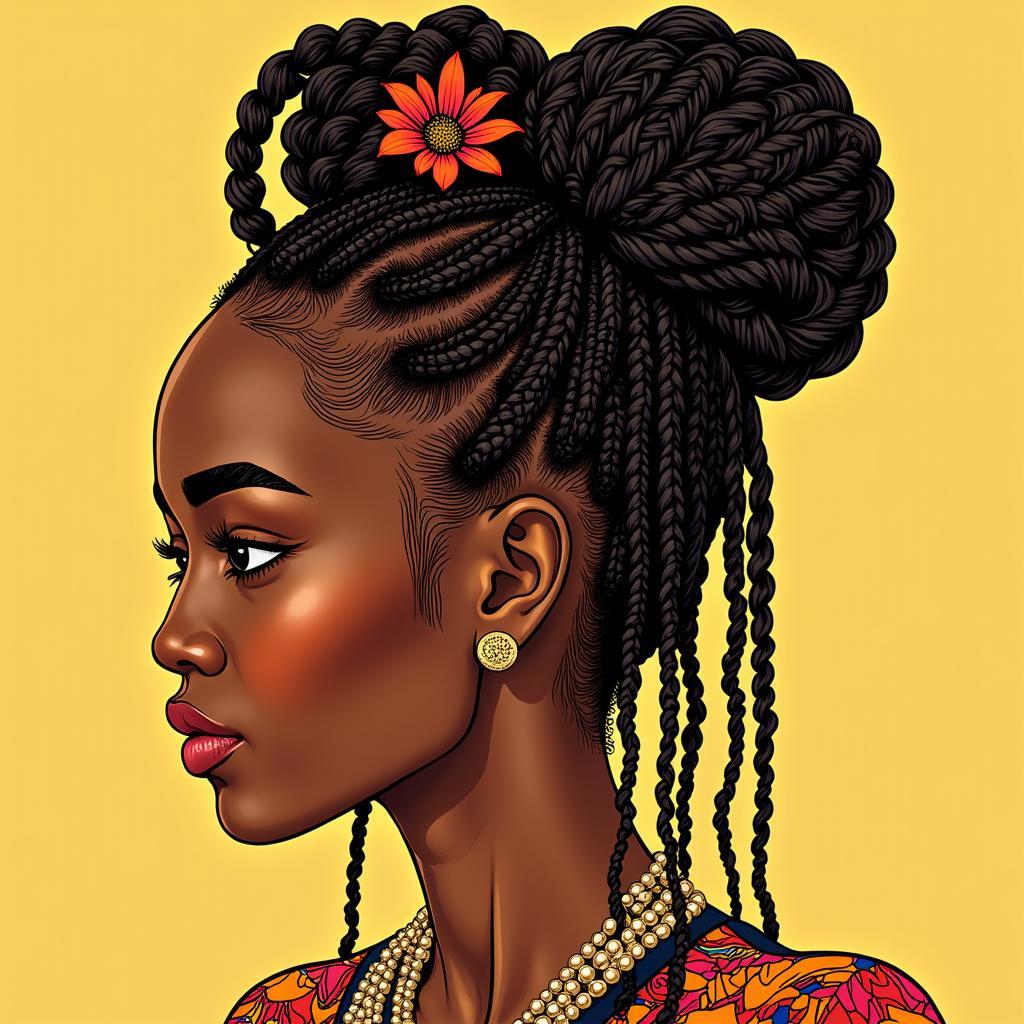African Color Psychology: Unveiling the Meaning of Colors in African Culture
African Color Psychology offers a fascinating glimpse into the rich tapestry of symbolism and meaning woven throughout the continent’s diverse cultures. Far beyond mere aesthetics, colors in Africa hold profound cultural significance, reflecting spiritual beliefs, social hierarchies, historical narratives, and even emotional states.
Understanding the nuances of African color psychology allows us to appreciate the depth and complexity of this vibrant continent. It’s a journey that unveils the language of colors, revealing how they communicate unspoken messages, evoke deep emotions, and connect generations through shared symbolism.
The Significance of Color in African Traditions
In many African cultures, color serves as a powerful tool for communication and expression. From the vibrant textiles worn for celebrations to the intricate beadwork adorning clothing and accessories, colors are imbued with meaning, acting as visual cues that convey a wealth of information about the wearer and their social standing.
For centuries, natural dyes derived from plants, minerals, and insects have been used to create a spectrum of hues, each associated with specific symbolism and traditions. These colors are not merely decorative but hold deep spiritual and cultural relevance.
Exploring the Spectrum: Common Color Meanings in African Culture
While the interpretation of colors can vary across different African cultures, some common themes and associations emerge.
Red: The Color of Life, Death, and Power
Red, often associated with the lifeblood that flows through our veins, holds a potent symbolism in African culture. It represents vitality, strength, and the raw energy of life itself. Red is also linked to death and the ancestral spirit world.
In many traditions, red is the color of mourning and is used in rituals to honor ancestors. The powerful presence of red can also signify danger or a warning.
White: Purity, Spirituality, and Ancestral Wisdom
White, often associated with light and purity, represents peace, spirituality, and the ancestral realm in many African cultures. It is the color of initiation ceremonies, signifying a transition to a higher spiritual plane.
White garments are often worn by spiritual leaders and healers, signifying their connection to the divine and their role as intermediaries between the physical and spiritual worlds.
 African Spiritual Leader in White Robes
African Spiritual Leader in White Robes
Black: Mystery, Power, and the Unknown
Black, often associated with the night sky and the mysteries it holds, embodies power, elegance, and the unknown in African cultures. It can represent the strength and resilience of the African people, as well as the vast potential that lies within.
Black is often used in rituals and ceremonies to ward off evil spirits and invoke protection. It is also a color associated with fertility and the earth’s abundance.
Green: Growth, Prosperity, and Connection to the Earth
Green, the color of lush vegetation and abundant harvests, represents growth, prosperity, and a deep connection to the land in African culture. It symbolizes hope, renewal, and the life-giving force of nature.
Green is often worn to celebrate harvests and to honor the spirits of agriculture. It is a reminder of the interconnectedness between humanity and the natural world.
Yellow: Wealth, Royalty, and Spiritual Enlightenment
Yellow, often associated with the sun’s radiance and the precious metal gold, signifies wealth, royalty, and spiritual enlightenment in African culture. It represents warmth, happiness, and the promise of a bright future.
Yellow is often used in ceremonies and celebrations to honor important guests and to symbolize good fortune.
 African Ceremony with Participants in Yellow Garments
African Ceremony with Participants in Yellow Garments
African Color Psychology in Everyday Life
The influence of color symbolism extends beyond traditional ceremonies and rituals, permeating various aspects of daily life in Africa.
Fashion and Adornment:
The vibrant colors adorning African textiles and clothing are not merely fashionable choices but often reflect cultural identity, social status, and personal expression. From the intricate patterns of kente cloth to the bold hues of Maasai beadwork, each color choice conveys a message.
Art and Architecture:
African art and architecture are renowned for their vibrant use of color. From the colorful murals adorning homes and buildings to the intricate masks and sculptures used in ceremonies, colors bring stories to life, evoke emotions, and connect viewers to the spiritual realm.
Language and Expressions:
Color metaphors and expressions are deeply ingrained in African languages, reflecting the cultural significance of color. For example, in some cultures, saying someone “has a white heart” signifies their purity and good intentions.
African American Therapist Wichita KS: Exploring Cultural Connections
The enduring legacy of African color symbolism can be observed in the African diaspora, particularly in communities where cultural traditions have been preserved and celebrated. For instance, the use of specific colors in clothing, art, and even home décor can reflect a connection to ancestral roots and a sense of cultural pride.
If you’re interested in delving deeper into the cultural significance of colors and how they might relate to your own experiences, consider connecting with an African American therapist in Wichita KS. They can provide valuable insights into the role of culture in shaping identity and well-being.
African American Man Six Year Old Kids: Sharing Cultural Heritage
Sharing the richness of African color symbolism with younger generations is a powerful way to foster cultural understanding and appreciation. Engaging children in activities that explore the meanings behind colors, such as creating art using traditional African motifs or learning about the symbolism of colors in African folktales, can spark their curiosity and connect them to their heritage.
Conclusion: Embracing the Vibrancy of African Color Psychology
Exploring the world of African color psychology is a journey into the heart of a continent where colors transcend mere aesthetics. It’s a testament to the power of cultural heritage and the enduring legacy of traditions passed down through generations. By understanding the language of colors in Africa, we gain a deeper appreciation for the richness and diversity of human expression.




